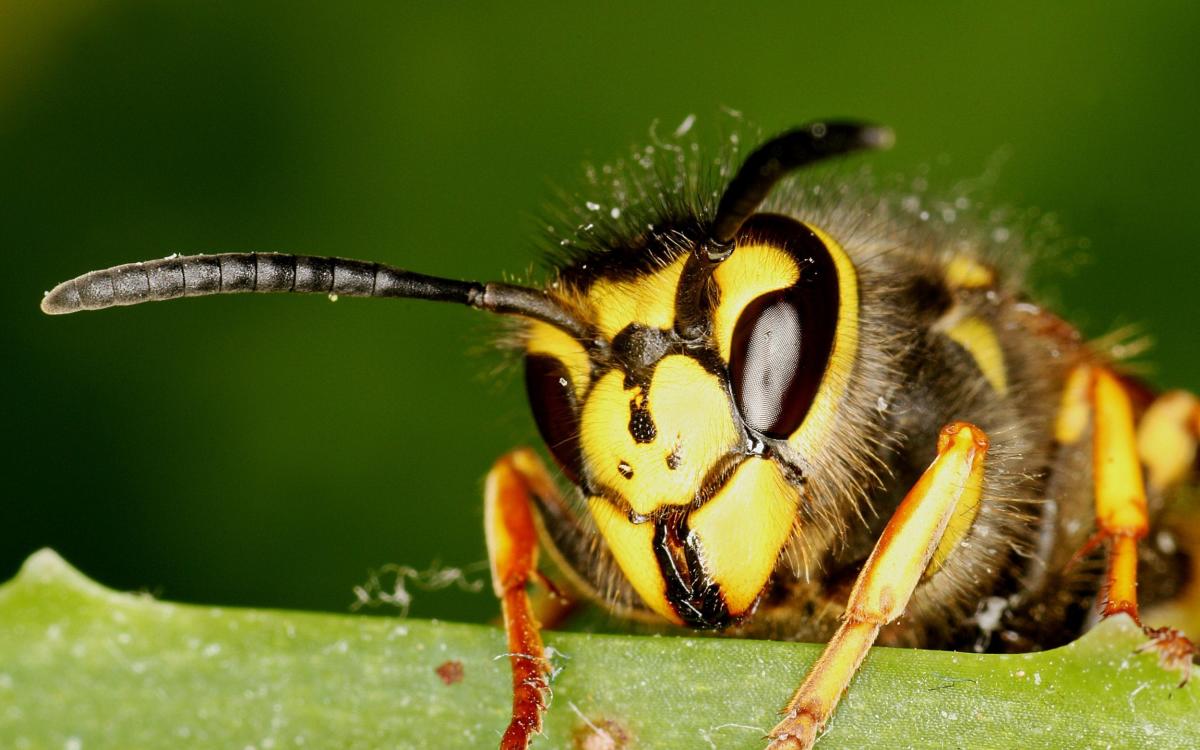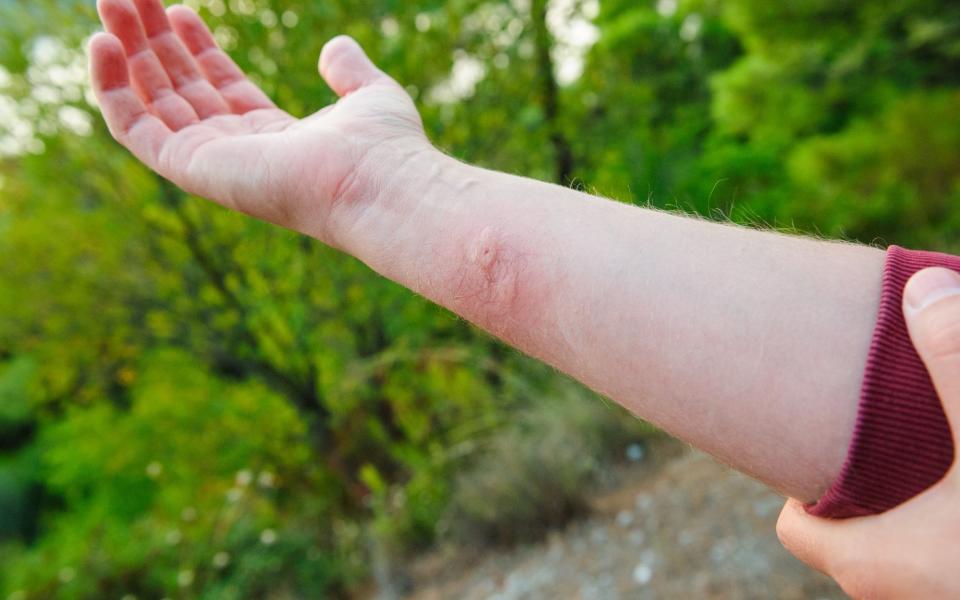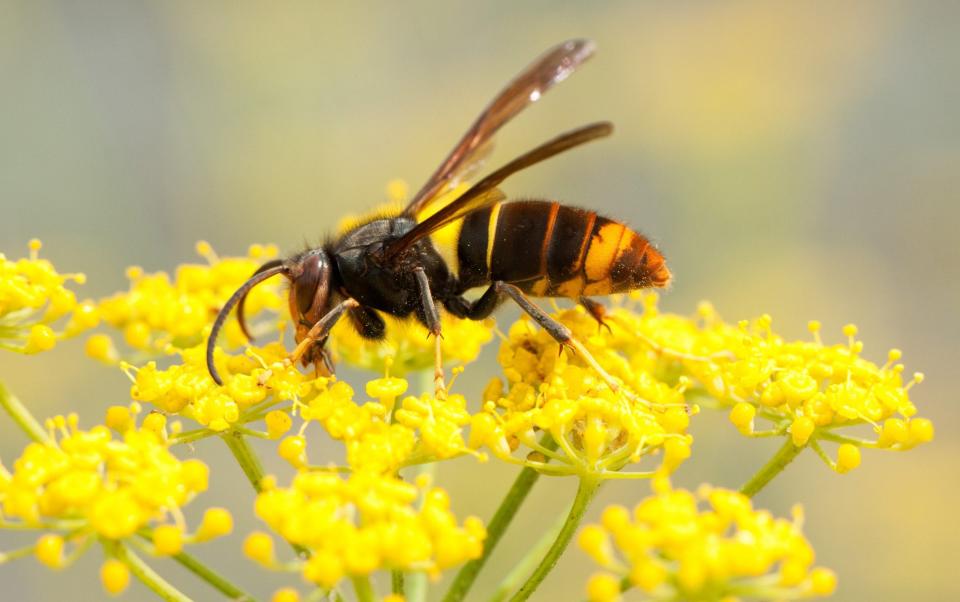


Often thought of as the scourge of picnics, most people fear wasps during the summer months, unaware that they are more likely to be stung in September.
While a friendly honey bee dies with its sting, a wasp can stab its spiteful stylets with impunity. It is no wonder then that they are so hated.
According to a survey conducted by Rentokil Pest Control this summer, 48 per cent admit to avoiding outdoor drinking venues out of fear of wasps. One in five would leave a venue entirely if there was a single wasp present.
Anecdotally, wasp experts have known for decades that wasps come into contact with humans more in autumn than in summer, and thus stings tend to increase too. A 2023 study looked at the times of year when most people were admitted to hospital for wasp stings with numbers peaking in September and October.
Throughout the summer months, wasp swarms act as a disciplined unit, bringing high-protein foods (including other insects) back to the nest to feed their grubs. By autumn, the young wasps are in their pupal stage and the nest has less need for protein, so wasps spend more time foraging for food, including sugar and fallen, fermenting fruits. This leads them into contact with humans. As cider or wine fans will know, fermented fruit can change the behaviour of those who consume it and wasps are no exception, acting more aggressive and rowdier during this time. Autumn is also the time of year when wasp queens die off, leaving the remaining workers rudderless and prone to misadventures.

Here’s how you can protect yourself from their sting.
The first job when it comes to combating wasps is to track down their nests. While wasps don’t build in winter, a handful will survive in hives built in the summer, especially if the weather is warm.
“Wasps often enter loft spaces through worn fascia or soffit boards, or through holes drilled for electrical cables,” explains Robert Hayden, the senior surveyor at Shield Pest Control. “Nesting spots include lofts, sheds, garages, beneath roof tiles and under eaves. It’s essential to seal any cracks or holes thoroughly to prevent wasps from starting a nest.”
The best way to find a nest is to observe wasps – where are they coming from or going to. Follow them and you may find the nest: a cone of chewed up wood.
A large wasp nest can grow to the size of a basketball if left unchecked. “Treat a nest as early as possible before numbers increase and wasps become more aggressive, increasing the threat of being stung,” advises Paul Blackhurst, the head of Technical Academy at Rentokil.
At this stage, you can buy foam or powder which acts as a poison and should kill the wasps inside the nest. You can also buy or make a wasp trap.
“You can easily make your own trap using a simple plastic bottle,” says Hayden. “Cut off the neck, flip it upside down and place it inside the bottle to create a funnel. Add an enticing bait like sugary liquid or a sweet substance. Secure the bottle with tape and hang it around your garden or home to attract and trap wasps. Once trapped, you can release them elsewhere.”
“By late summer, nests can grow too large to handle on your own [sometimes as many as 25,000 individuals], increasing the risk of stings,” says Hayden. “In such cases, it’s best to seek professional assistance to remove the nest safely and effectively.”
As the weather gets cooler, a wasp’s metabolism slows down, meaning poisons take longer to take effect. A poison which would kill a nest in 24 hours in summer could take up to 20 days in cooler weather. Seek professional advice if a nest is causing issues into the autumn.
Wasps construct nests in dry, warm, accessible spaces. The attics of older homes typically tick those boxes for a wasp queen looking for a new pad.
“There are a number of steps you can take including maintenance checks to ensure all cracks and potential entry points are sealed, installing fly screens on doors and windows, making sure rubbish bins are sealed so worker wasps cannot feed,” says Blackhurst.
Wasps have earned a reputation for being angry and aggressive. They are prone to agitation, so shouting and waving your arms at a wasp can make it angrier. “To avoid being stung when wasps are present, it is best to stay calm and avoid flapping your hands or swatting the pests. Don’t wear scents or bright colours and patterns which can attract them, and keep sugary food and drinks covered and attended to,” says Blackhurst.
Wasp venom accumulates in the blood so the more stings you get, the more they hurt. Unlike a bee sting, the stinger stays in the wasp, so you won’t have anything to remove, though the area will come up as a red welt.
Wasp stings aren’t dangerous unless you’re allergic to them. Those who are can go into anaphylaxis which may result in swelling, a drop in blood pressure, and breathing difficulties.
In most people, a wasp sting is best treated by cleaning the area around the sting with soap and water and applying an ice pack. If you can, elevate the area to reduce swelling. Antihistamines can also help reduce itchiness and swelling. Wasp venom is alkaline so a common suggestion is to use acidic vinegar or lemon juice to neutralise it, but there is no evidence that these remedies work.
The radical decline in all insects has led some to leap to wasps’ defence. It has not been a vintage year for Vespula vulgaris (the common yellowjacket wasp) due to the wet weather. Many species, who build their nests in the ground, are wiped out by flooding. In addition, the arrival of the Asian hornet, which preys on wasps and other flying insects, is a cause of consternation among scientists.


Wasps are vital for biodiversity. The Natural History Museum’s scientists estimate that, each summer, wasps in the UK capture about 14 million kilograms of insects such as caterpillars and greenfly, preventing gardens from being ravaged. They are also essential pollinators of some plants, including orchids and figs.